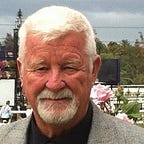4RAR — the ‘cocky’ battalion
(NOTE: The 4th Battalion — 4RAR — served in the Vietnam War as part of the Australian Force Vietnam in 1968 and 1969. This essay concerns the first tour of duty by the battalion, and not its second tour.)
When the 4th Battalion (4RAR) arrived in Vietnam, in May 1968, it did not have a significant ‘nasho’ contingent because one Company (A) had been dissolved to accomodate the NZ component, and the men of A Company (mostly Regulars) had been distributed across the remaining three Companies.
This meant it had a level of experience far greater than the other battalions that had preceded it in Vietnam.
Its commanding officer — Lt/Col ‘Lee’ Greville — considered it to be ‘very professional’ given its previous experience in the Malaya (1965) and Borneo (1966) conflicts, and because a great percentage of its men had served in those conflicts.
But this opinion of the battalion was not shared by senior Task Force officers.
According to 4RAR’s own Lt/Col Brian Avery in his work, In the Anzac Spirit, the Task Force CO (Brigadier Hughes) regarded 4RAR as ‘overconfident’ and ‘too sure of itself’.
(See also, AWM document, HQ 1ATF, ‘Summary of Conference’ held on 11 September 1968).
That opinion ‘offended’ senior officers of 4RAR according to Lt/Colonel Brian Avery.
At the same time, Maj/Gen MacDonald told Lt/Gen Daly that he considered 4RAR to be ‘cocky’, and that its soldiers had preferred the ‘easier conflicts’ to be engaged in.
(See MacDonald (COMAFV) DO letter 69/68 to Daly (CGS) 28th June 1968)
When one of his platoons was savaged in a bunker system early in its tour (on the 13th September, 1968) Greville disputed the tactics that had evolved in Vietnam by other battalions. Having lost three men killed in the bunker system, and only killing two enemy soldiers in return, Greville cried, ‘And we had achieved what? Some pieces of equipment and some real estate that had no significance after the battle.’
(See 4RAR Narrative, 23rd February 1969(Doc 7/4/36 AWM 95.
Avery also confirms this.
Greville concluded that 4RAR’s tactics when it came up against bunkers would be to ‘surround them and not push in — and then rely on artillery’.
(Greville himself, in an interview to OHU questionnaire, tape 2, pp. 1–2, S01767 (file 94/0264), AWM)
According to the national historian Ashley Ekins in his final volume on the Vietnam War, Fighting to the Finish, Greville felt that the new Task Force Commander — Brig C. Pearson MC, who had taken over from Hughes — considered 4RAR to be ‘leaden-footed’ and ‘reluctant’ because it had gotten a ‘bloody nose’ on one occasion.
Greville thought Pearson considered his battalion to be ‘chicken’, but argued that he had simply decided not to risk men in fruitless bunker assaults.
(See ‘Operation Federal’, Annex B to 1ATF, ‘Quarterly Evaluation Report’ period 1 Jan to 31 March 69, 6th April 1969 (1/4/148) AWM 95)
Make of it what you will, but statistically, 4RAR appears to have had one of the easiest tours of all the battalions that served, most likely as a result of Greville’s cautious approach to bunker systems.
It lost 15 men killed on its first tour (the lowest number of the 9 Regiments) which reinforces the notion that it wasn’t anywhere near as gung-ho as the other battalions.
But as a former member of that battalion, I’m proud to say that when it returned home to Australia in May 1969, it left behind 40 men who had reinforced it during its tour but who hadn’t done the minimum six months ‘in country’.
I was one of those soldiers — considered so professional, that Brigadier C. Pearson put most of us into an ad hoc platoon, the ‘2nd D&E Platoon’, for a specific task that not even SAS would contemplate.
The task? To interdict about 800 enemy soldiers congregating in the Xuyen Moc area.
Operating on APCs, we were Pearson’s ‘assault troopers’ as he called us, years later.
And unlike Greville’s 4th Battalion, the 2nd D&E Platoon took the fight up to the enemy. The rest is history.
(SOURCES: In the Anzac Spirit, Avery; Fighting to the Finish, Ekins; and AWM documents)
